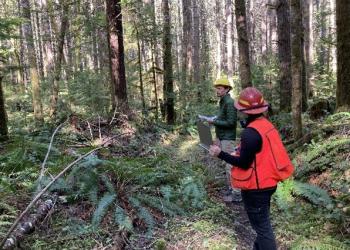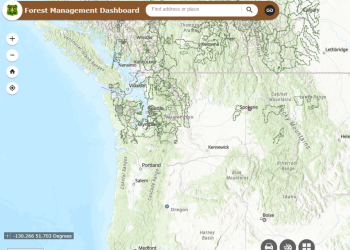Forest Management
Specific forest management actions – such as commercial thinning or prescribed burning – help make forests more resilient to fire and disease as well as restore some of the natural complexity that may be missing due to past forest management practices. Detailed management plans and engaged collaborative groups, plus local milling infrastructure all help implement successful forest management projects, that provide benefits to local communities.
Forest management actions are designed to:
- Help forests be more resilient to fire and disease
- Provide habitat, clean water & recreation opportunities
- Supply forest products & economic benefits to communities
Pacific Northwest Timber Program

Sustainable timber harvesting is a vital forest management tool that balances economic demand for wood products with ecological resilience. By carefully planning and executing timber sales, we support local jobs, provide essential raw materials, and help forests adapt to challenges with environmental stressors like severe weather, drought, and wildfires.
Dorena Genetic Resource Center

Dorena Genetic Resource Center programs apply scientific knowledge to develop hands-on solutions to forest management challenges such as highly destructive, non-native, invasive diseases and pests and large-scale fires.
The Role of Silviculture in Forest Management

Forest Service Silviculturists use available knowledge, science as well as ecosystem modeling and other tools to create plans and prescriptions to help forests grow to be as resilient and healthy as possible in the future. As managers work to help forests develop into more complex and resilient ecosystems, commercial thinning is often “prescribed” as a treatment by silviculturists.
Data & Maps
Forest Management Map Viewer & Data Dashboard

This national dashboard displays maps and data on accomplishment activities, special initiatives, and general boundary information on national forests.



